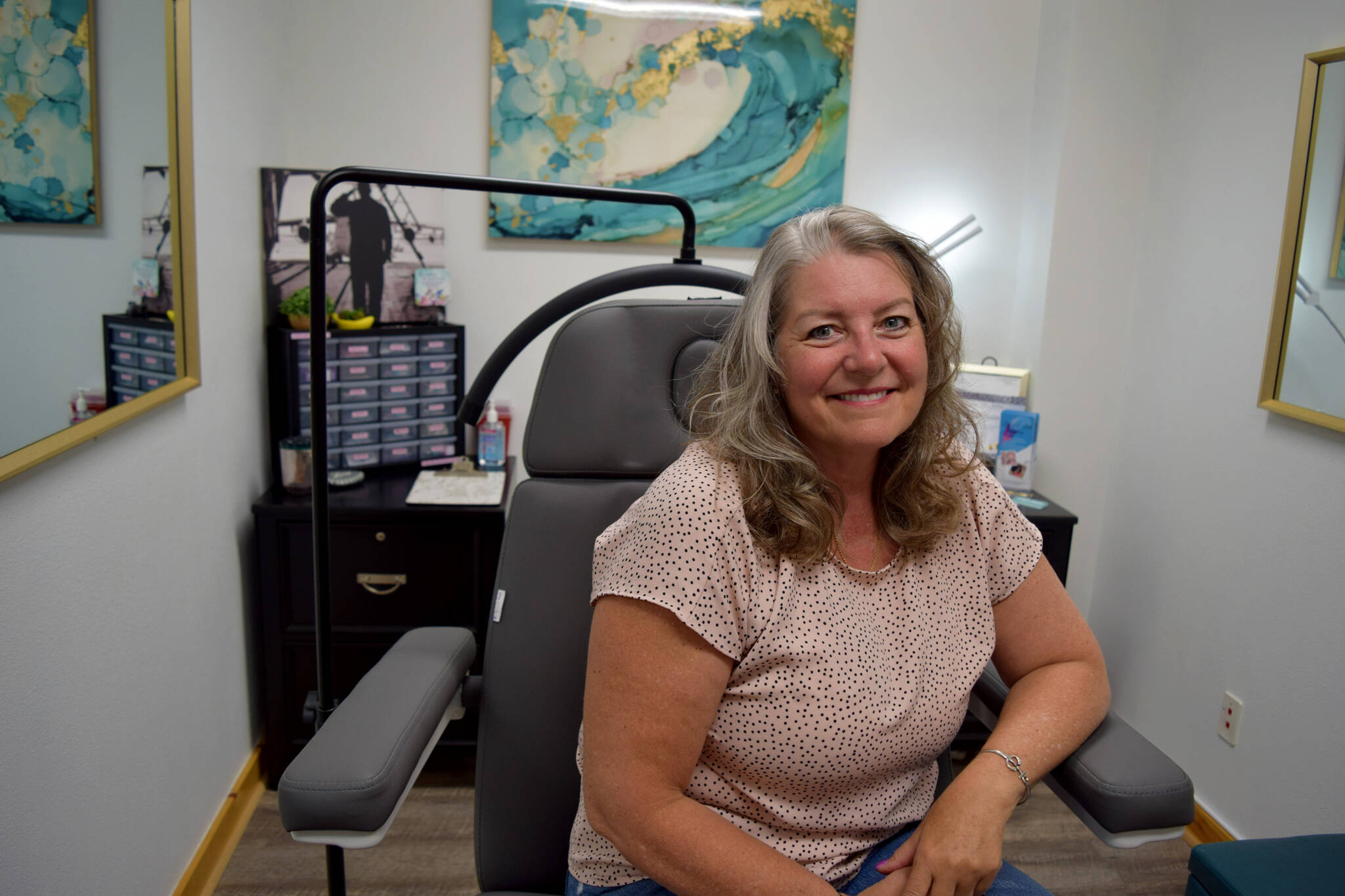Proudly displayed in the corner of her small tattoo studio, Beverly Davidson keeps a silhouette photo of herself saluting a plane during her time in the U.S. Air Force.
For Davidson, a nurse and recently retired lieutenant colonel, the photo is a reminder that she has always felt a duty to serve others.
“My mom used to say I was a nurse before I was out of grade school,” she said. “Even with the military, I just felt called to join.”
Since retiring from the Air Force this year, it’s that desire to serve that has inspired Davidson’s next venture: Quill and Ink Tattoo, a restorative and cosmetic tattoo shop she opened this summer in downtown North Bend.
Coming out of high school, Davidson spent 12 years as an enlisted member of the Air Force, becoming one of the first women to work as an ammunition load team member on the B-52 bomber. She took a break from the military, becoming a civilian nurse in 1999, serving stints as the head emergency room nurse at Snoqualmie Valley Hospital and as a per diem nurse at Swedish Issaquah, a role she still holds today.
After a 12-year break, Davidson returned to the military as an officer, retiring as a lieutenant colonel, and contributing her nursing background as an aeromedical evacuations nurse. During the pandemic, she spent time in 10 countries over a five-month span helping COVID-positive patients and U.S. employees.
When she was approaching retirement from the Air Force, Davidson was still a per diem nurse at Swedish, but with the pandemic being hard on nurses — and never having less than two jobs — she began searching for something to do that would allow her more flexibility to spend time with her family.
Having witnessed life-changing injuries during her time in the military, Davidson developed an interest in scar and camouflage restoration work about a year before she retired. She began studying cosmetic tattooing and scalp micropigmentation, a process that creates the illusion of hair by tattooing a tiny hair follicle in ink.
Around the same time, about a year ago, Davidson realized that her own eyebrows were thinning and nearly gone — a relatively common occurrence for women as they age — and decided to have her eyebrows tattooed through scalp micropigmentation.
While tattoos are commonly used for decoration, they are being increasingly used for cosmetic and restorative purposes alongside medical conditions such as hair loss, scarring or cancers, according to a study published in the National Library of Medicine. This type of tattooing is commonly used to treat baldness, vitiligo and scars, and can be used for nipple reconstruction in women following breast cancer.
“It was so amazing to me, that I thought to myself I could really serve my community, whether that was through cosmetic tattoos or therapeutic tattoos,” she said. “Part of what helps a person have a perception of self identity is to have their facial features intact. If your eyebrows go away, it can be very significant and profound.”
Although it’s not her focus, Davidson also contributes fineline or small tattoos for sentimental value. Her favorite was getting to tattoo the fingerprint of a man’s recently deceased husband over his heart.
Davidson said cosmetic tattooing is more lateral to nursing than one might think — involving technique, treatment, following safety protocols and providing aftercare.
The whole process, she said, is all about restoring a person’s confidence and providing treatment, whether that means a restored eyebrow or hairline or providing a small tattoo that builds a patient’s confidence.
“The whole point is to restore or improve the client’s confidence by the way they see themselves,” she said. “Whatever we can do to give people more convenience, more self confidence, better self image, I think is a win-win.”



